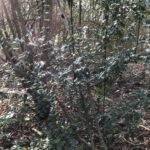Yr1: we recapped the seasons and used our previous data to remind us, what and how to record.
What was the weather like?
How did you record this on the sheet?
What outdoor clothing did you have to wear?
How did you record the temperature?
Yr3: first the children went bird spotting. They recorded their finds on a new spotter sheet which would then be put on their tally chart from last session. Next, they used the map, again from previous session, to record the food that was available.
How did the data differ from previous session?
Why do you think it is different?
What can we do to help the birds?
Yr5: a formal data format for the children to collect data was produced using their excellent data sheet from previous session. The children worked independently and soon realised there is not a sustainable source of food in the outside area for humans. They then collected data on food for animals and concluded that there was not a lot available to them either.
What does negative data mean?
Why do we not have plants growing or producing fruit in our veg beds in the winter?
Are our veg beds man made or natural?
Yr4: discussed the previous data and why we were doing the same again this session. They looked for animals in the outdoor area and any evidence the confirmed their observations, they added the quantity found using a tally.
What animals did you find?
Explain the evidence that you found
What did you find when you compared data from last session?
What is the reason for this?
Yr2: walking round the grounds the children recorded animals on their data sheet. This was then compared to the previous sheet from the Autumn session.
What is habitat?
Did you spot anything different from last session?
Can you give reasons for these differences?
Can you name 1 animal that hibernates?
Yr6: added data to their sheet then compared the data against the last sessions.
Were there any differences?
Have you noticed any mistakes you may be making when collecting your data?
Yr6 then discussed the changes from adulthood to old age.
Can you name 4 chances?
The next activity was to investigate if working in the outdoor environment was good for body and mind.
In groups of 5 the children chose 2 test people to measure their heart rate before an activity. They chose an activity that did not involve running. After the activity they measured their heart rate again.




























